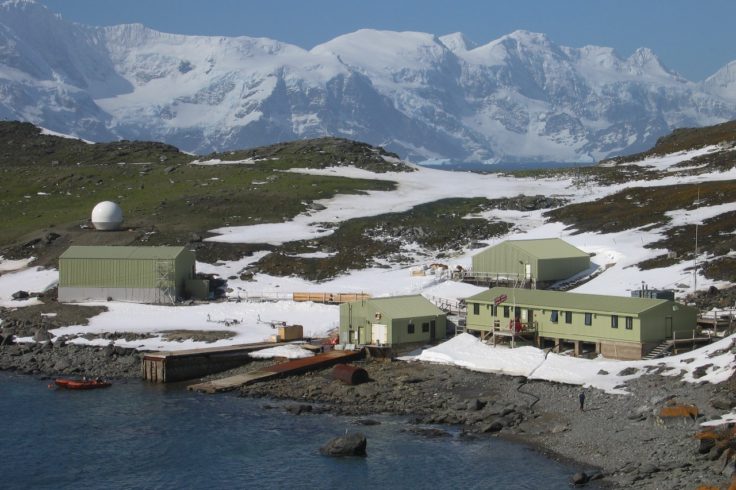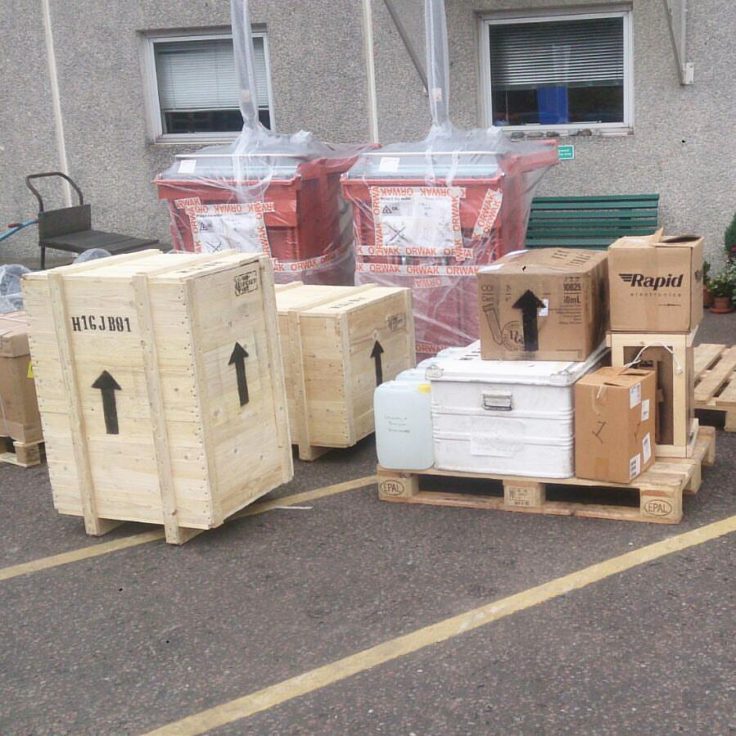New blog from ecologist Jes Bartlett who’s heading to spend the summer working at Signy Island Research station. Here she talks about preparing cargo in her blog: The Cargo Deadline
I’m Jes, and I’m a polar ecologist currently studying for my PhD investigating the stress- physiology of polar insects. That’s right, there are insects in Antarctica! And would you believe it, they hold the title of largest animal on land down there! I will be visiting Signy Island this coming season to explore the physiology of an invading midge, Eretmoptera murphyi (Eric, or Murph to their friends) and explore how its introduction to this very stunted ecosystem is changing things: I’ll be looking at everything from soil-chemistry to vegetation and the bugs inbetween in an attempt to ascertain any ecological impacts. I’ll also be trying to find out how it is surviving so well, and whether it is capable of surviving conditions even further south on the Antarctic Continent. I’ll be writing a few blogs for BAS about my experiences leading up to my departure and my work and adventures on Signy. I hope you enjoy my journey!

As I stood in front of my timber expedition crates, admiring my stencilling that designated the crates for Signy Island, the reality of my trip began to sink in: I was really going to Antarctica. Although the occasion was lacking a large crate marked “ENGLISH TEA” and several congratulatory slaps on the back from esteemed peers who had come to toast the moment with me, at least there were no more major hurdles to overcome. No more paperwork, permits, medicals, mandatory tooth extractions or logistical nightmares left to tackle. My head was empty of “at-risk” wisdom teeth, the mountain of paperwork had been scaled and now that my laboratory and field equipment was packed and ready to ship on the RSS Ernest Shackleton, I just had a couple of training courses left before I was fully prepped for my expedition. But first, I had to get 150kg of cargo containing litres of flammable liquids, acids and tens of thousands of pounds worth of equipment from this loading bay at the University of Birmingham, down to the British Antarctic Survey (BAS) HQ in Cambridge. Cue my helpful assistant (read supportive boyfriend), a hired van, and a dodgy GPS.

Cambridge shouldn’t be hard to find when travelling from Birmingham, even less so if you pride yourself on your innate sense of direction and ability to navigate in featureless polar and alpine landscapes, as I do. But noting our mood for adventure and all things epic, the GPS as good as took us via Wales and our navigation skills were apparently left redundant in a landscape of tarmac and clearly marked road signs. My supervisor in Cambridge, the unflappable Pete Convey began sending out emails in search of me. She should have been here by now…
Two hours later than planned, but spirits intact (both metaphorically and literally: despite a hair-raising last minute 2-wheeled roundabout exit, the methanol and hydrochloric acid remained thankfully unscathed), we rocked up to the formidable gates guarding the British Antarctic Survey depot. In my mind I had imagined the BAS cargo depot to be a frenzy of activity and me, a lost new rooky getting in the way as I stood beside my shiny new crates, wandering what to do. The yard would be full of flustered looking people directing forklift trucks that carried obviously well-travelled trunks; Ranulph-esque explorers marching about with armfuls of ropes and gear, possibly with a loyal sled-dog in tow; An excitingly huge piece of equipment whose function you couldn’t begin to fathom bound for some heroic scientist on an ice-sheet would sit half hidden beneath a tarpaulin. A stow-away penguin waddling between clusters of people bent over maps. Alas, in reality BAS is a well-oiled machine and they can’t afford such chaos, not to mention the distraction a penguin would cause.
The depot looked like any other goods-inward terminal and their effectiveness came with zero fluster and as much fanfare as I get when I pick up parcels from the Royal Mail office. My whole cargo operation was completed in 5 minutes, comprising merely of an exchange of my crates and paperwork for an “OKthenthanksbye”. For me, shipping my lab, my equipment, essentially all the tools of my PhD, was the logistical culmination of 8 years of aspiration, some significant grafting and a year of planning. To the staff, I was another pallet of goods to be forklifted to the left of the door please. Their decades of experience and the sheer incalculable feat of moving all the equipment and supplies necessary to support hundreds of scientists, technicians, field guides and more, into several locations across Antarctica means that the place has to run like clockwork with barely a stray explorer in sight. How disappointing! The wind was thoroughly taken from my expedition sails. Having now left my shiny crates and boxes in the hands of the masters of logistics, without fanfare or fantastical chaos, I had nothing more to do but turn around and head back to Birmingham (minus the GPS). But just as I got back into the van and began belting up I spotted an excitingly huge piece of enigmatic equipment shining from between two shipping containers. It was marked “Halley- Brunt Ice Shelf”, and my heart did a little skip. This was no ordinary cargo depot after all. And lest I forget, I really am going to Antarctica!

